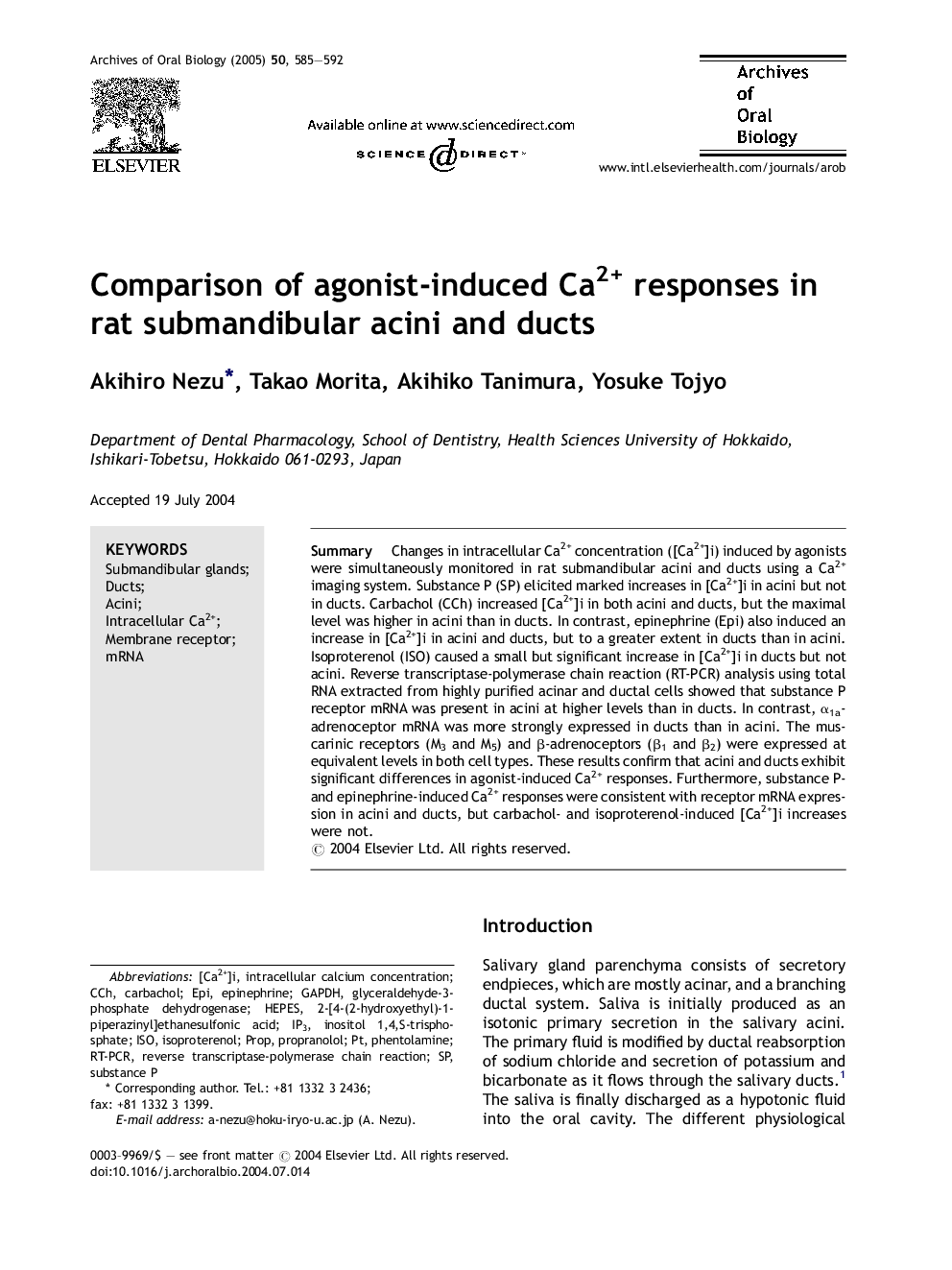| Article ID | Journal | Published Year | Pages | File Type |
|---|---|---|---|---|
| 9996684 | Archives of Oral Biology | 2005 | 8 Pages |
Abstract
Changes in intracellular Ca2+ concentration ([Ca2+]i) induced by agonists were simultaneously monitored in rat submandibular acini and ducts using a Ca2+ imaging system. Substance P (SP) elicited marked increases in [Ca2+]i in acini but not in ducts. Carbachol (CCh) increased [Ca2+]i in both acini and ducts, but the maximal level was higher in acini than in ducts. In contrast, epinephrine (Epi) also induced an increase in [Ca2+]i in acini and ducts, but to a greater extent in ducts than in acini. Isoproterenol (ISO) caused a small but significant increase in [Ca2+]i in ducts but not acini. Reverse transcriptase-polymerase chain reaction (RT-PCR) analysis using total RNA extracted from highly purified acinar and ductal cells showed that substance P receptor mRNA was present in acini at higher levels than in ducts. In contrast, α1a-adrenoceptor mRNA was more strongly expressed in ducts than in acini. The muscarinic receptors (M3 and M5) and β-adrenoceptors (β1 and β2) were expressed at equivalent levels in both cell types. These results confirm that acini and ducts exhibit significant differences in agonist-induced Ca2+ responses. Furthermore, substance P- and epinephrine-induced Ca2+ responses were consistent with receptor mRNA expression in acini and ducts, but carbachol- and isoproterenol-induced [Ca2+]i increases were not.
Keywords
HEPESmRNAPROPGAPDHCCHRT-PCREPIIP32-[4-(2-hydroxyethyl)-1-piperazinyl]ethanesulfonic acid[Ca2+]iaciniEpinephrineISOisoproterenolIntracellular Ca2+Submandibular glandsintracellular calcium concentrationSubstance PReverse transcriptase-polymerase chain reactionPropranololPhentolamineCarbacholductsglyceraldehyde-3-phosphate dehydrogenaseMembrane receptor
Related Topics
Health Sciences
Medicine and Dentistry
Dentistry, Oral Surgery and Medicine
Authors
Akihiro Nezu, Takao Morita, Akihiko Tanimura, Yosuke Tojyo,
